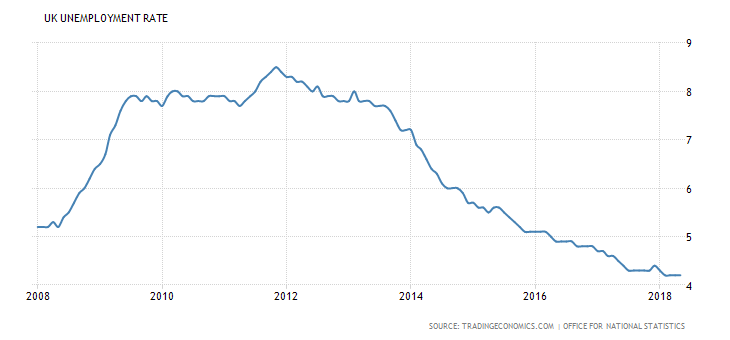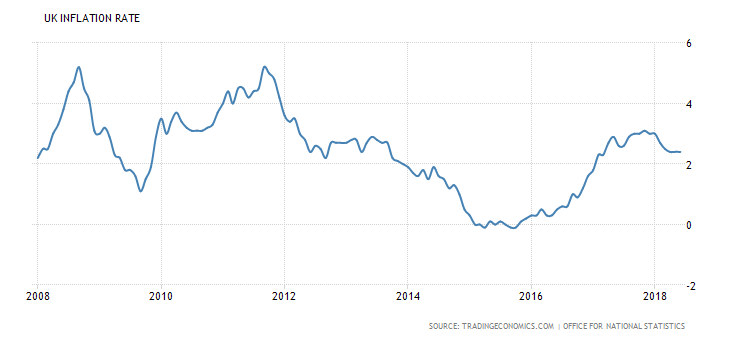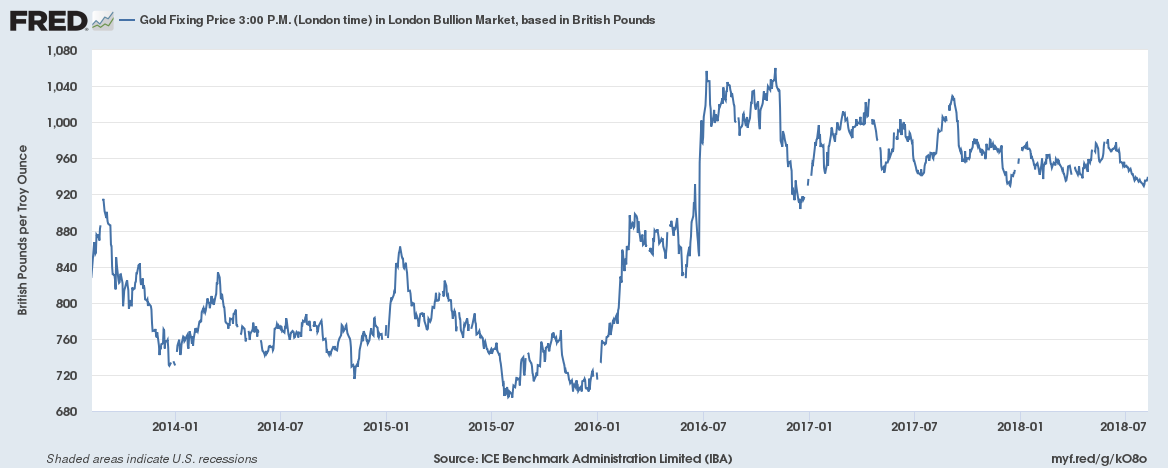Are there more central banks than the Fed and the ECB? Oh, yes. Last week, the Bank of England raised rates 25 basis points. What does it imply for gold?
Second Hike in 10 Years
On last Thursday, the Bank of England’s Monetary Policy Committee voted to raise its key interest rate from 0.50 to 0.75 percent. As we can read in the summary of the monetary policy meeting:
The Committee judges that an increase in Bank Rate of 0.25 percentage points is warranted at this meeting.
The move was the second hike in more than 10 years, following the 25 basis points raise in November 2017, which reversed an earlier interest rate cut made in August 2016 in the aftermath of the Brexit vote. The BoE maintained its quantitative easing program unchanged.
Moreover, the UK central bank signaled further hikes, although gradual and limited in scope:
The Committee also judges that, were the economy to continue to develop broadly in line with its Inflation Report projections, an ongoing tightening of monetary policy over the forecast period would be appropriate to return inflation sustainably to the 2% target at a conventional horizon. Any future increases in Bank Rate are likely to be at a gradual pace and to a limited extent.
Why did the BoE hike? Well, the UK survived the post-Brexit referendum turmoil. The inflation is above 2 percent, while unemployment is low, as one can see in the charts below. With very tight labor market and rising wages, the policymakers could be afraid of the overheating of the economy, even with the uncertainty about Brexit. As we can read in the minutes:
Although modest by historical standards, the projected pace of GDP growth over the forecast was slightly faster than the diminished rate of supply growth, which averaged around 1½% per year. The MPC continued to judge that the UK economy currently had a very limited degree of slack and there were a number of signs that the labour market was continuing to tighten. The employment rate and the number of vacancies had risen to record highs, and indicators of recruitment difficulties had increased further. The unemployment rate was low and was projected to fall below the MPC’s estimate of the natural rate. In the MPC’s central projection, therefore, a small margin of excess demand emerged by late 2019 and built thereafter.
Chart 1: UK inflation rate over the last ten years.
Chart 2: UK unemployment rate over the last ten years.

The markets were initially surprised, as the unanimous vote was interpreted as hawkish. So the pound appreciated against the greenback. However, Mark Carney, the BoE Governor, sounded dovish during the press conference, as he repeated several times that interest rates would go up only gradually. He also said that “policy needs to walk – not run – to stand still,” so the British currency reversed against the U.S. dollar.
BoE and Brexit
The hike implies that the BoE ceased to be afraid of Brexit. As a reminder, the U.S. and the UK were the first advanced economies to recover after the Great Recession. So everyone expected that the Fed and the BoE would be the vanguards of the tightening cycle. But then the Brits voted to leave the EU, which shook the financial markets and led the BoE to ease its monetary policy. When it turned out that the world did not collapse, the central bank reversed the cut in November in 2017. Now, it tightened its stance even further. Of course, it stipulated that:
the economic outlook could be influenced significantly by the response of households, businesses and financial markets to developments related to the process of EU withdrawal.
However, the hike means either that the upside risks outweigh now any potential risks related to the exit from the EU, or that the BoE stopped believing that Brexit is going to happen. After all, two years have passed since the referendum and nothing is still known. There are just seven months left until Brexit is scheduled to occur and nothing is still known. And Theresa May faces another serious political crisis, after David Davis, the Brexit Secretary, and his colleague Boris Johnson, the Foreign Secretary, resigned in July.
Implications for Gold
What does it all mean for the gold market? Well, first of all, the BoE joined the Fed and other central banks in tightening. It means higher interest rates globally, which should be negative for gold prices, especially if the ECB finally hikes interest rates. The higher rates in the UK should also imply a stronger pound. If the strengthening of the British currency weakens the U.S. dollar, gold may gain. But it might be also the case that both currencies will appreciate against the euro, which would rather hit the yellow metal. As one can see in the chart below, the price of gold expressed in the British pound surged after the British vote, but it reversed later and stayed within a relatively narrow trading range. With the BoE more hawkish than expected, the price of gold expressed in the British currency can go south.
Chart 3: Gold prices in British pounds (London P.M. fix) over the last five years.
When it comes to Brexit and another political crisis in the UK, the increased political uncertainty may spur some safe-haven demand for gold, but any impact should be limited, as investors – apparently just as the BoE – are fed up with the prolonged Brexit saga.
Disclaimer: Please note that the aim of the above analysis is to discuss the likely long-term impact of the featured phenomenon on the price of gold and this analysis does not indicate (nor does it aim to do so) whether gold is likely to move higher or lower in the short- or medium term. In order to determine the latter, many additional factors need to be considered (i.e. sentiment, chart patterns, cycles, indicators, ratios, self-similar patterns and more) and we are taking them into account (and discussing the short- and medium-term outlook) in our trading alerts.


